|
| |

President Trump and Seema Verma, administrator of the Centers for Medicare and Medicaid Services. (Jabin Botsford/The Washington Post)
AHH: The Trump administration is expected to issue guidance on allowing states to convert Medicaid funding into block grants as soon as this month. The move would follow the Office of Management and Budget’s signal in November that the initiative had been dropped or delayed, the Wall Street Journal’s Stephanie Armour reports.
“Approving state waivers to change Medicaid funding to block grants would be among the administration’s most controversial moves to reshape Medicaid, a federal-state program that provides health coverage to one in five low-income Americans. Medicaid is the main source of long-term care coverage for Americans and is a guaranteed benefit, or entitlement, for eligible individuals,” she writes.
“Lawmakers in Tennessee, Alaska and Oklahoma have already expressed an interest in pursuing block grants. Supporters of block grants say the change would free states from federal requirements and give them more flexibility to try new ways to increase coverage and cut costs.”
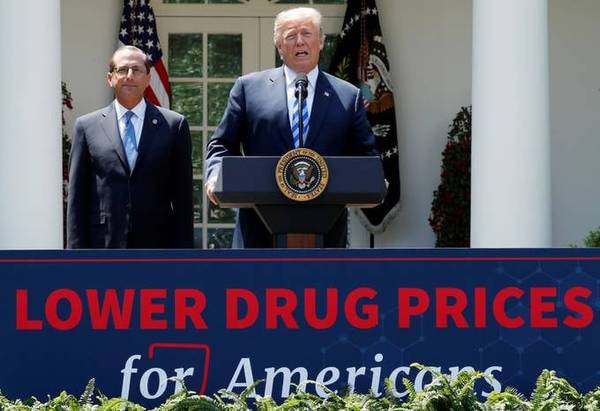
Health and Human Services Secretary Alex Azar and President Trump. (Jonathan Ernst/Reuters)
OOF: President Trump chided HHS Secretary Alex Azar in a campaign meeting for failing to do more to address health care and drug pricing concerns. The confrontation happened after the president was briefed on polling from battleground states showing the public trusts Democrats more than Republicans on the issue, our colleagues Josh Dawsey and Yasmeen Abutaleb report.
“Trump reacted furiously and said the Democrats would ‘kill us’ on health care, according to the four people, who requested anonymity to candidly describe the private meeting. The president then picked up the phone, called Azar and put him on speakerphone in the middle of the meeting,” Josh and Yasmeen write.
Trump told Azar he’s “not getting it done,” and that he needs to “hurry up” to lower drug prices and to allow for cheaper drugs to be imported from Canada.
“Trump also asked Azar for an update on HHS’s work on lowering drug pricing, and the two discussed the fact that drug importation was popular with the public," Josh and Yasmeen write. "They also shared frustration about the number of health-care regulations that had been stopped by the courts — including a rule that would require drugmakers to post the list prices of their medications in television ads and state requirements that Medicaid recipients work to maintain their coverage — and by the lack of media coverage of the administration’s health-care and drug pricing policies."
“Azar told Trump he was doing everything he could but that much of his work was being stopped or hampered," they add.
HHS spokeswoman Caitlin Oakley responded this way: “We do not comment on conversations or meetings between Secretary Azar and the president. The Trump administration has done more than any other administration in history to lower the high cost of prescription drugs and we fully anticipate this momentum will continue.”
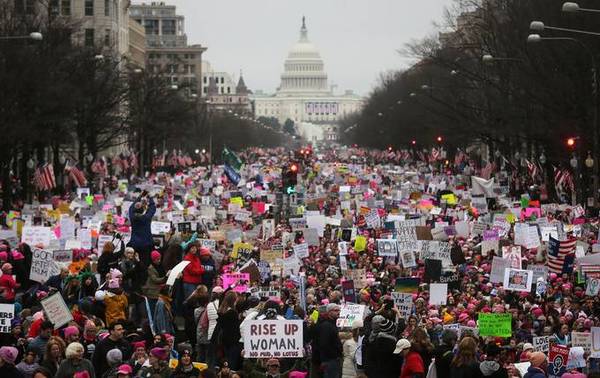
The original, unaltered photo of the 2017 Women’s March in the District. An altered version appears in an exhibit at the National Archives. (Mario Tama/Getty Images)
OUCH: The National Archives admitted it made numerous changes to a photo of the 2017 Women’s March showcased at the National Archives exhibit celebrating the centennial of women’s suffrage.
At least four of the photos were found to be altered, our Post colleague Joe Heim reports. A placard that proclaims “God Hates Trump” has “Trump” blotted out so that it reads “God Hates.” A sign that reads “Trump & GOP — Hands Off Women” has the word Trump blurred out.
Words on signs that referenced women’s anatomy were also blurred. One sign blurred the word “vagina” from a sign that originally read, “If my vagina could shoot bullets, it’d be less REGULATED.” Another sign that read “This Pussy Grabs Back” has the word “Pussy” erased.
Archives spokeswoman Miriam Kleiman said the changes were made because the museum hosts young people and the messages could be deemed inappropriate and because, as non-partisan federal agency, the archives was trying to stay away from political controversy.
But prominent historians expressed dismay when told about the action taken by the Archives,
"There's no reason for the National Archives to ever digitally alter a historic photograph," Rice University historian Douglas Brinkley said. "If they don't want to use a specific image, then don't use it. But to confuse the public is reprehensible. The head of the Archives has to very quickly fix this damage. A lot of history is messy, and there's zero reason why the Archives can't be upfront about a photo from a women's march."
|
| |
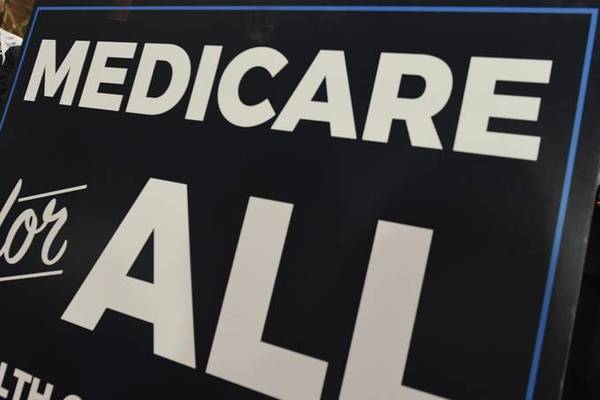
A sign at a news conference to reintroduce Medicare-for-all legislation. (Susan Walsh/AP)
— The American College of Physicians, the second-largest physician group in the country, for the first time says it supports a single-payer health-care approach, Modern Healthcare’s Rachel Cohrs reports.
“ACP senior vice president Robert Doherty said ACP released its policy framework intentionally for discussion in political debates in the 2020 election cycle,” Rachel writes. “The medical specialty society still envisions a limited potential role for private supplemental insurance in its preferred single-payer model, and supports a public insurance option available to all, including individuals with employer-sponsored insurance.”
But the group doesn’t plan to endorse any 2020 candidate’s plan.
“ACP recommends transitioning to a system that achieves universal coverage with essential benefits and lower administrative costs through two potential approaches: a single payer financing system or a publicly-financed coverage option with regulated private insurance,” the group writes in a policy framework.
|

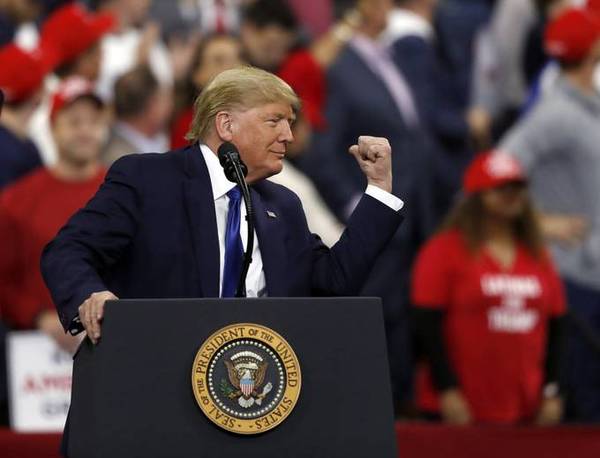
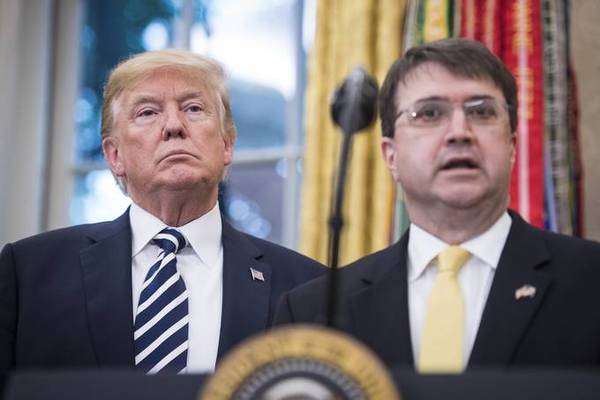
No comments:
Post a Comment